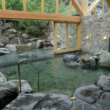Japan’s Modern and Traditional Designs: Japan is renowned for its rich and diverse design heritage, which seamlessly blends the old and the new. From ultramodern architecture to traditional crafts, Japan offers a captivating glimpse into a world where modernity and tradition coexist harmoniously. In this article, we will delve into the captivating realm of Japan’s modern and traditional designs, exploring their distinctive features and the influence they exert on a global scale.
Table of Content
Introduction
- Modern Design in Japan
1.1 Contemporary Architecture
1.2 Interior Design Trends
1.3 Graphic Design - Traditional Design in Japan
2.1 Traditional Architecture
2.2 Zen Gardens
2.3 Traditional Crafts - Fusion of Modern and Traditional
3.1 Wabi-Sabi Aesthetics
3.2 Modernizing Traditional Art Forms - Japanese Design Influences Globally
4.1 Minimalism and Simplicity
4.2 Pop Culture and Anime
4.3 Design Innovation - Conclusion
- FAQs
Introduction
Japan has a long-standing reputation for its exceptional design sensibilities, which have captivated the world for centuries. From the serene simplicity of traditional tea houses to the futuristic skyscrapers dotting the urban landscape, Japan’s design ethos continues to inspire and influence artists, architects, and designers worldwide. Let us embark on a fascinating journey through Japan’s captivating design scene.
1. Modern Design in Japan
1.1 Contemporary Architecture
In recent decades, Japan has emerged as a hotbed of contemporary architecture, pushing the boundaries of structural innovation and aesthetics. From the iconic Tokyo Skytree to the striking works of architects like Tadao Ando and Kengo Kuma, Japan’s modern architectural marvels are astounded with their bold designs, clean lines, and integration with nature.
1.2 Interior Design Trends
Japanese interior design showcases a seamless blend of functionality, minimalism, and aesthetic appeal. The concept of “Ma,” which emphasizes the use of space and emptiness, permeates modern interior design in Japan. Clean and uncluttered spaces, natural materials, and a focus on creating a sense of tranquility are key elements of Japanese interior design trends.
1.3 Graphic Design
The realm of graphic design in Japan is vibrant and eclectic, encompassing a wide range of styles. From the playful and colorful aesthetics of kawaii culture to the sophisticated simplicity of traditional calligraphy, Japanese graphic design presents a harmonious fusion of tradition and innovation. Manga and anime have also played a significant role in shaping Japan’s unique visual language.
2. Traditional Design in Japan
2.1 Traditional Architecture
Japan’s traditional architecture is a testament to the country’s rich cultural heritage. The elegant simplicity of wooden temples and shrines, the intricate craftsmanship of traditional machiya townhouses, and the graceful curves of pagodas showcase the time-honored architectural traditions that continue to inspire awe and admiration.
2.2 Zen Gardens
Zen gardens, or “karesansui,” embody the essence of tranquility and simplicity. These meticulously designed gardens feature carefully raked gravel, strategically placed rocks, and sparse vegetation, inviting contemplation and meditation. Zen gardens are a prime example of how Japanese design encapsulates harmony and balance.
2.3 Traditional Crafts
Japan’s traditional crafts, known as “kogei,” represent the pinnacle of artisanship. From delicate pottery and intricate lacquerware to exquisite textiles and refined metalwork, these crafts reflect the meticulous attention to detail and reverence for tradition that permeate Japanese culture.
3. Fusion of Modern and Traditional
3.1 Wabi-Sabi Aesthetics
Wabi-sabi is a Japanese aesthetic concept that celebrates imperfection, impermanence, and the beauty of the natural world. This philosophy finds expression in various art forms, including ceramics, tea ceremonies, and interior design. The fusion of modern design with wabi-sabi principles creates a unique and enchanting visual experience.
3.2 Modernizing Traditional Art Forms
Contemporary Japanese artists and designers often reinterpret traditional art forms, breathing new life into age-old techniques. From contemporary takes on woodblock prints to innovative ceramics and textile designs, these modern adaptations preserve the essence of tradition while infusing it with fresh and captivating energy.
4. Japanese Design Influences Globally
4.1 Minimalism and Simplicity
Japanese design’s emphasis on minimalism and simplicity has left an indelible mark on the global design landscape. From the sleek lines of Scandinavian furniture to the clean aesthetics of Apple products, the influence of Japanese design principles can be felt in various corners of the world.
4.2 Pop Culture and Anime
Japan’s pop culture, including anime and manga, has gained a massive following worldwide. The distinctive art styles and visual storytelling techniques found in Japanese animation have influenced countless artists and designers, transcending cultural boundaries and inspiring creativity on a global scale.
4.3 Design Innovation
Japan’s dedication to innovation extends beyond technology and into the realm of design. From cutting-edge industrial design to groundbreaking advancements in automotive design, Japanese designers continually push the boundaries of what is possible, fusing form and function in innovative and captivating ways.
Conclusion
Japan’s design landscape is a captivating blend of modernity and tradition. Its unique ability to fuse ancient aesthetics with contemporary sensibilities sets it apart as a global design powerhouse. From awe-inspiring architecture to exquisite traditional crafts, Japan’s designs continue to inspire and leave an indelible mark on the world stage.
Similar Articles
FAQs About Japan’s Modern and Traditional Designs
1. How has traditional Japanese design influenced modern architecture?
Traditional Japanese design principles, such as simplicity, harmony with nature, and the use of natural materials, have influenced modern architects globally. Architects like Tadao Ando and Kengo Kuma draw inspiration from traditional Japanese architecture, incorporating its aesthetics and philosophies into their contemporary designs.
2. What is the significance of wabi-sabi in Japanese design?
Wabi-sabi is a Japanese aesthetic concept that celebrates imperfection and impermanence. It emphasizes the beauty of simplicity, modesty, and the natural world. Wabi-sabi principles find expression in various art forms, including ceramics, tea ceremonies, and interior design, creating a unique and enchanting visual experience.
3. How has Japanese graphic design impacted global visual culture?
Japanese graphic design, with its vibrant and eclectic styles, has had a profound impact on global visual culture. From the colorful and playful aesthetics of kawaii culture to the influence of manga and anime, Japanese graphic design has inspired countless artists and designers worldwide.
4. What are some famous examples of Japanese design in everyday life?
Examples of Japanese design in everyday life include sleek and minimalist furniture, innovative consumer electronics, and thoughtfully designed kitchenware. Companies like Muji and Nintendo exemplify the Japanese approach to design, emphasizing functionality, simplicity, and aesthetic appeal.
5. What are some notable examples of traditional Japanese crafts?
Traditional Japanese crafts encompass a wide range of disciplines. Notable examples include delicate porcelain from Arita, intricate kimono weaving from Kyoto, intricate lacquerware from Wajima, and exquisite pottery from Mashiko. These crafts showcase the exceptional artistry and craftsmanship deeply rooted in Japanese tradition.
6. How does Japanese design incorporate nature and the environment?
Nature plays a significant role in Japanese design. From incorporating natural materials like wood and stone in architecture to creating indoor spaces that seamlessly blend with outdoor gardens, Japanese design seeks to harmonize with nature. This emphasis on sustainability and the environment is evident in concepts like “sustainable architecture” and the incorporation of eco-friendly practices.
7. How does Japanese design prioritize functionality alongside aesthetics?
Japanese design places great importance on functionality, seeking to create objects and spaces that are both visually appealing and highly functional. Whether it’s the ergonomic design of everyday utensils or the efficient layout of a traditional tatami room, Japanese design strives to enhance the user’s experience while maintaining aesthetic integrity.
8. What are some key principles of Japanese interior design?
Key principles of Japanese interior design include minimalism, harmony, and the concept of “Ma” or negative space. The use of natural materials, such as wood and paper, is common, as is the integration of elements like shoji screens and tatami mats. Japanese interior design aims to create a sense of calm, simplicity, and balance within the living space.
9. How can one incorporate Japanese design elements into their own home?
To incorporate Japanese design elements into your home, you can start by decluttering and embracing minimalism. Use natural materials like wood and incorporate elements of nature, such as indoor plants or a small Zen garden. Embrace neutral color palettes, clean lines, and simplicity in furniture and decor choices. Additionally, you can explore traditional Japanese craftsmanship by incorporating pieces like pottery, ceramics, or traditional textiles.
Japan’s Modern and Traditional Designs









